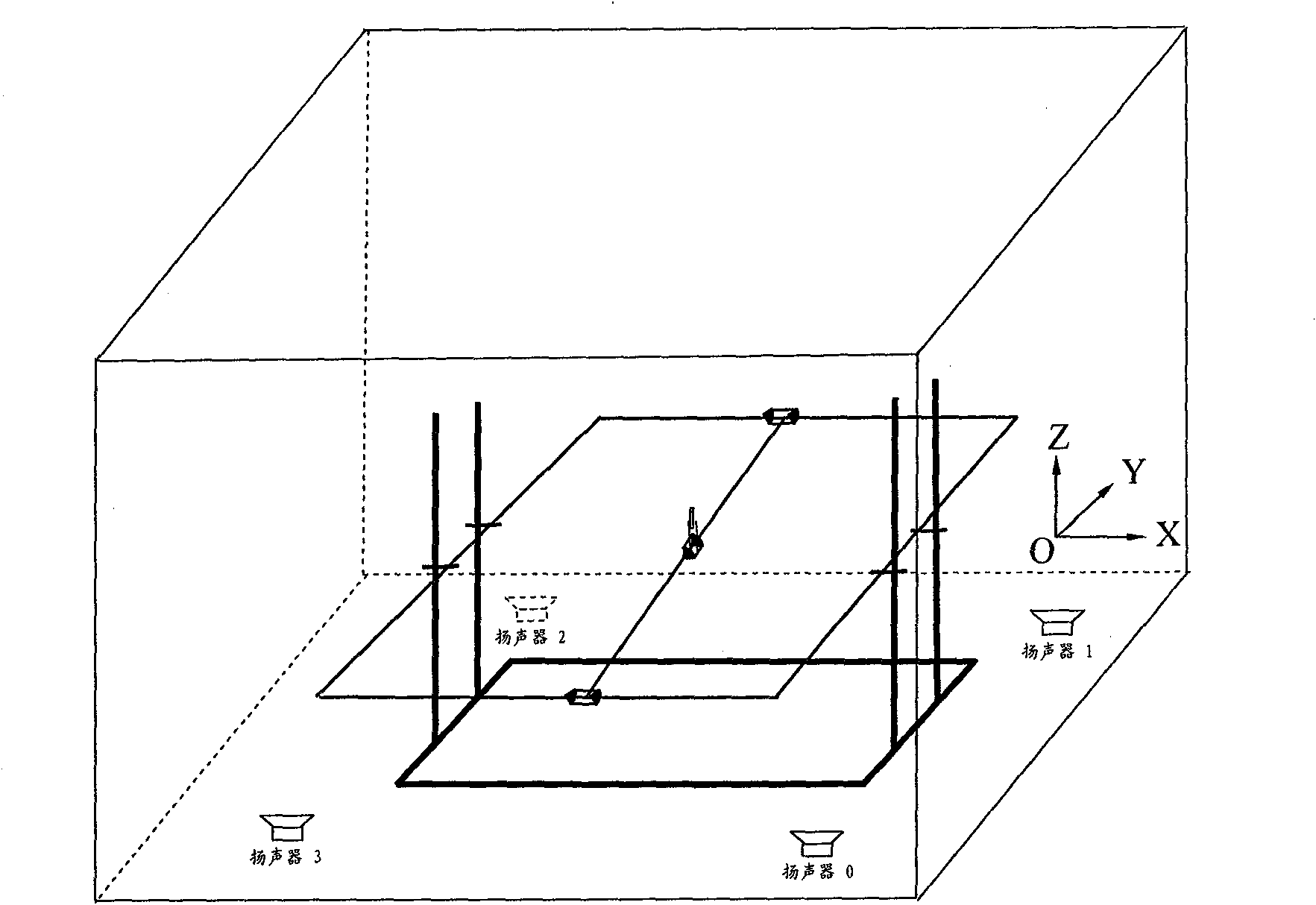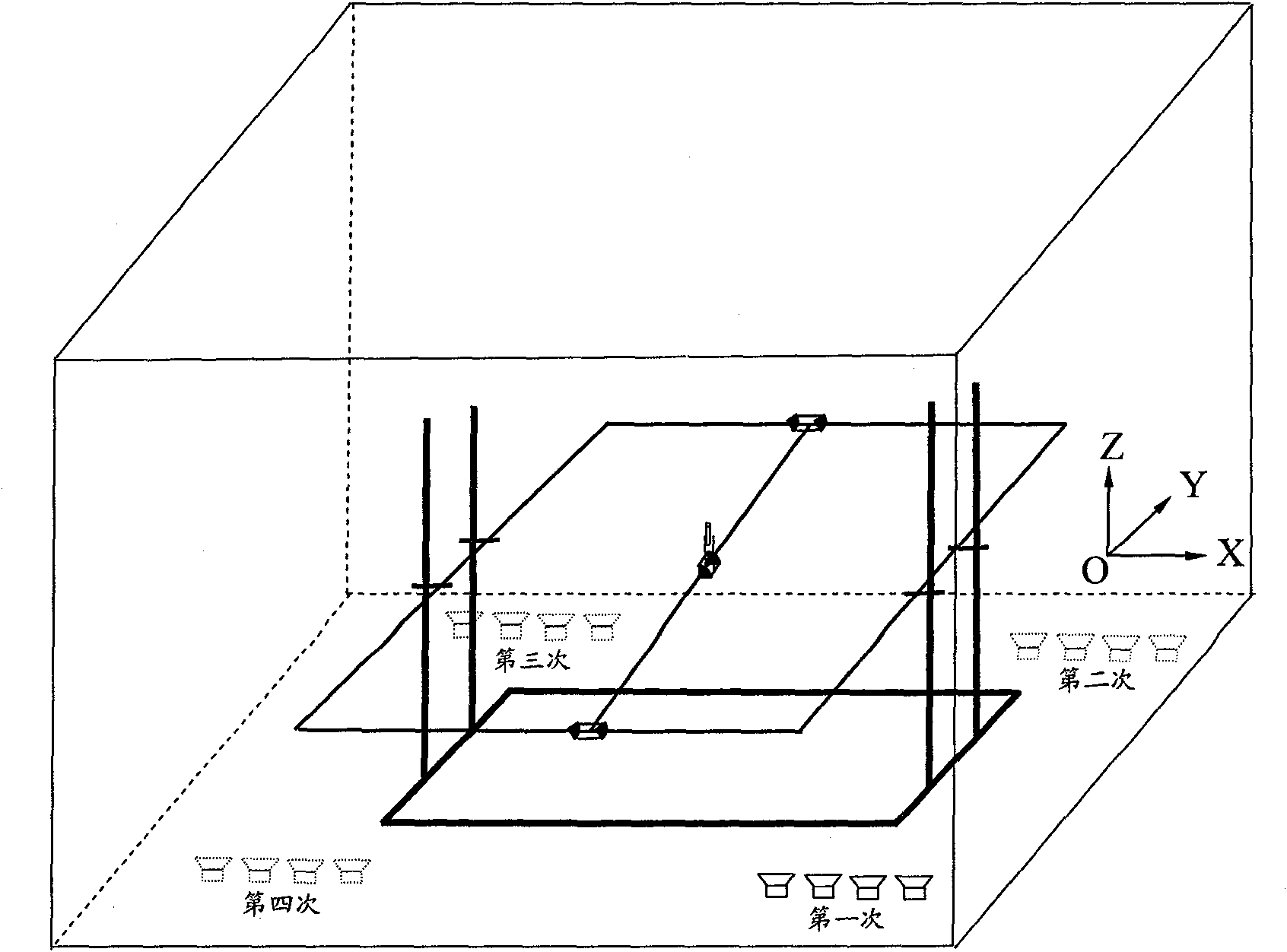Method for realizing reverberant field focusing by using random array
A reverberation sound field and sound focusing technology, which is applied in the field of reverberation sound field focusing by using random arrays
- Summary
- Abstract
- Description
- Claims
- Application Information
AI Technical Summary
Problems solved by technology
Method used
Image
Examples
Embodiment 1
[0070] In this example, if figure 1 As shown, on the ground of the reverberation room (5.1m in length, 4.9m in width, and 4.0m in height), four loudspeaker units with a power of 20W are randomly placed in an array, and a microphone unit is placed at the desired focal point for Measure the received signal at the desired point, place another microphone directly in front of the focus point, and move the position of the microphone forward at an interval of 3cm to measure the focus signal at other points other than the desired point. Use the Pulse instrument of Danish B&K company to record the received signals collected by the two microphones, and write the code on the matlab software of the PC to realize the time-domain inversion and amplitude amplification processing of the received signal corresponding to the desired focus point recorded by the Pulse instrument .
[0071] The specific implementation process of this embodiment includes the following steps:
[0072] 1) First se...
Embodiment 2
[0079] In this example, if figure 2 As shown, 4 loudspeaker units are randomly placed on the ground of the reverberation room, and the same three steps as described in Embodiment 1 are used to mix the single-cycle sinusoidal pulse signals with frequencies of 600Hz, 1000Hz and 3000Hz in a 4-element random array. Acoustic field focusing experiment.
[0080] When the microphone unit slides along the X-axis, Y-axis and Z-axis at intervals of 3 cm, the sound pressure peak values of the focus signals corresponding to the three frequency source signals are measured on the three coordinate axes with the distance difference (the position of the microphone The change curve of the distance from the desired focus point). Figure 10 , 11 and 12 show the normalized distribution curves of the sound pressure peaks of the focus signals corresponding to the source signals with frequencies of 600Hz, 1000Hz and 3000Hz on the X-axis, Y-axis and Z-axis respectively.
[0081] Comparing these c...
Embodiment 3
[0083] In this example, if image 3 As shown, in the reverberation chamber, the 4-element line arrays are respectively placed at the positions of the four speaker units mentioned in Embodiment 2, and the three steps described in Embodiment 1 are also followed at these four position points. The reverberation sound field focusing experiment of the 4-element linear array is carried out on the single-cycle sinusoidal pulse signals with frequencies of 600Hz, 1000Hz, and 3000Hz respectively, and the results of the reverberation sound field focusing experiment of the 4-element linear array and the 4-element random array are compared.
[0084] When the microphone unit slides along the X-axis, Y-axis and Z-axis at intervals of 3 cm, the sound pressure peak values of the focus signals corresponding to the three frequency source signals are measured on the three coordinate axes with the distance difference (the position of the microphone The change curve of the distance from the desire...
PUM
 Login to View More
Login to View More Abstract
Description
Claims
Application Information
 Login to View More
Login to View More - R&D
- Intellectual Property
- Life Sciences
- Materials
- Tech Scout
- Unparalleled Data Quality
- Higher Quality Content
- 60% Fewer Hallucinations
Browse by: Latest US Patents, China's latest patents, Technical Efficacy Thesaurus, Application Domain, Technology Topic, Popular Technical Reports.
© 2025 PatSnap. All rights reserved.Legal|Privacy policy|Modern Slavery Act Transparency Statement|Sitemap|About US| Contact US: help@patsnap.com



